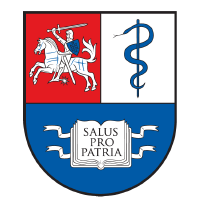Topic Editors


Human Anatomy and Pathophysiology, 3rd Edition
Topic Information
Dear Colleagues,
Anatomists are scientists who study how the human body is made for correlating structure with function and dysfunction at all levels, from the macroscopic to microscopic and from the ultrastructural to the molecular.
Human anatomy provides researchers of many disciplines and areas with all the basic information needed to effectively plan their experiments and interpret their results.
Hence, this article collection intends to gather reviews and original papers on human anatomy, histology, and embryology, as well as other closely related medical fields—e.g., physiology, pharmacology, radiology, surgery, clinical medicine, etc.—that have an anatomical focus.
Particular attention will be given to computed tomography studies. Furthermore, we would like to collect papers about phylogenesis, bioethics, and the history of science, especially those that have an anatomical perspective. Sport, physical exercise, nutrition, and active aging can be academic fields of interest for an anatomist as well. Finally, those involved in bioengineering and regenerative medicine need knowledge of human anatomy for their advancements.
In conclusion, we welcome submissions to Anatomia, Biomedicines, Medicina, Tomography and The International Journal of Molecular Sciences (IJMS) that cover, but are not limited to, the following topics:
- Advances in human anatomy, histology, and embryology teaching and research;
- Anatomy in computed tomography;
- Advances in the pathophysiology of human organs or anatomical districts;
- Bioengineering the human body;
- Bioethical aspects in biomedical research on human anatomy and pathobiology;
- Clinical, surgical, and radiological anatomy: new insights;
- From human anatomy to pathophysiology: experimental models;
- Effects of physical exercise on the maintenance and/or improvement of healthy status;
- Extracellular vesicles: looking for new markers of health and disease;
- History of anatomy and medicine: learning from our past;
- How a healthy lifestyle can slow down senescence and contribute to active aging;
- How cell stress can influence cell differentiation, tissue homeostasis, and organ remodeling during the whole lifespan of an individual;
- Human body structures from a phylogenetic point of view;
- Liquid biopsy as a new frontier of medicine, including personalized;
- Microbiota/microbiome and its relationship with human body structures;
- Molecular anatomy: the relationship between shape and function at the molecular level;
- Neuroanatomy, neurobiology, neuropathology: new discoveries;
- Nutrition, sport, and health: looking for a virtuous combination;
- Stem cells, 3D cultures, and outgrowth in regenerative medicine;
- Using the corpse: usefulness of cadavers in medical training.
Prof. Dr. Francesco Cappello
Prof. Dr. Mugurel Constantin Rusu
Topic Editors
Keywords
- human anatomy
- human pathophysiology
- human histology
- human embryology
- clinical medicine
- bioengineering
- regenerative medicine
Participating Journals
| Journal Name | Impact Factor | CiteScore | Launched Year | First Decision (median) | APC | |
|---|---|---|---|---|---|---|

Anatomia
|
- | - | 2022 | 17.4 Days | CHF 1000 | Submit |

Biomedicines
|
3.9 | 6.8 | 2013 | 17 Days | CHF 2600 | Submit |

International Journal of Molecular Sciences
|
4.9 | 9.0 | 2000 | 20.5 Days | CHF 2900 | Submit |

Medicina
|
2.4 | 4.1 | 1920 | 17.5 Days | CHF 2200 | Submit |

Tomography
|
2.2 | 3.5 | 2015 | 26.7 Days | CHF 2400 | Submit |

Preprints.org is a multidisciplinary platform offering a preprint service designed to facilitate the early sharing of your research. It supports and empowers your research journey from the very beginning.
MDPI Topics is collaborating with Preprints.org and has established a direct connection between MDPI journals and the platform. Authors are encouraged to take advantage of this opportunity by posting their preprints at Preprints.org prior to publication:
- Share your research immediately: disseminate your ideas prior to publication and establish priority for your work.
- Safeguard your intellectual contribution: Protect your ideas with a time-stamped preprint that serves as proof of your research timeline.
- Boost visibility and impact: Increase the reach and influence of your research by making it accessible to a global audience.
- Gain early feedback: Receive valuable input and insights from peers before submitting to a journal.
- Ensure broad indexing: Web of Science (Preprint Citation Index), Google Scholar, Crossref, SHARE, PrePubMed, Scilit and Europe PMC.
Related Topic
- Human Anatomy and Pathophysiology, 2nd Volume (21 articles)

